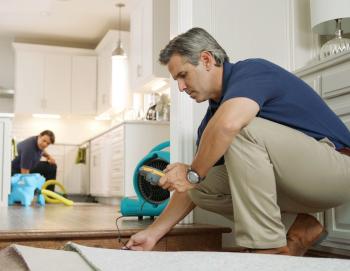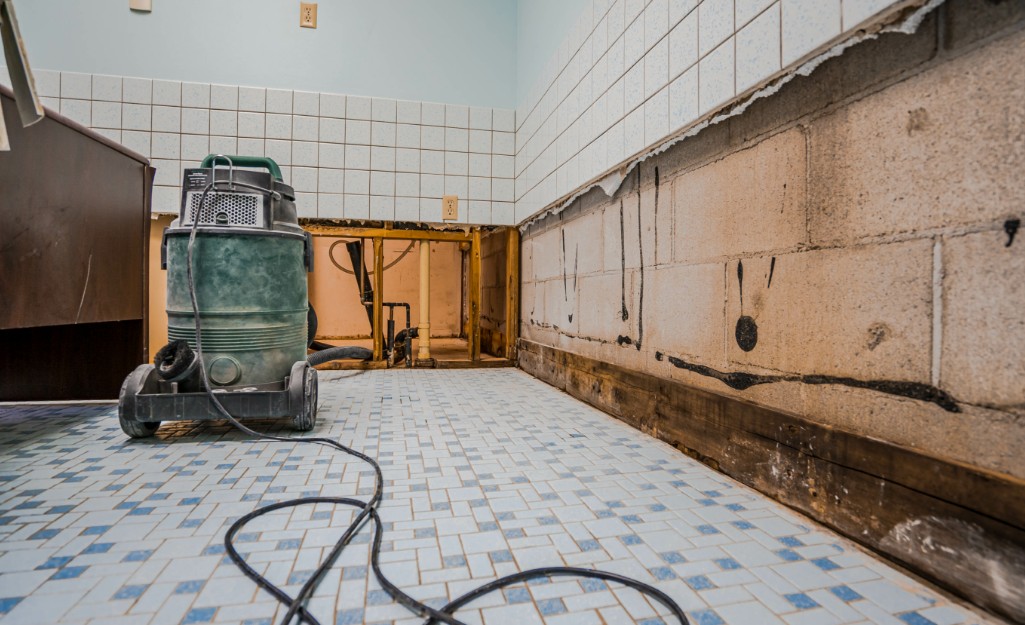Common mistakes to avoid when hiring Flood Cleanup Services
Wiki Article
Water Damage Restoration 101: Recognizing the Process and Cost
Water damage can strike all of a sudden, leaving homeowners in a state of confusion. Recognizing the reconstruction procedure is essential for efficient recovery. From assessing the damage to picking the appropriate provider, each action influences the general outcome and expense. Variables such as the kind of water damage and urgency additionally play a significant duty. What are the details methods used in remediation, and how can one prepare for potential expenditures?Kinds of Water Damage
Water damage can arise from numerous sources, each offering one-of-a-kind challenges for repair. The 3 primary kinds of water damage are classified based upon contamination degrees: tidy water, gray water, and black water. Tidy water originates from sources like damaged pipelines or rain, posturing marginal health risks. Gray water, which includes wastewater from sinks or cleaning devices, consists of contaminants that may trigger discomfort or health problem if ingested. Black water, one of the most unsafe classification, comes from sewer or floodwaters, having damaging bacteria and microorganisms. Each kind demands details restoration strategies and security steps to successfully deal with the damage and minimize health and wellness risks. Recognizing these differences is essential for experts and property owners entailed in the water damage remediation procedure.Initial Assessment and Examination
A thorough preliminary evaluation and assessment are vital actions in the water damage remediation process. This phase begins with an expert examining the extent of the damage, determining the source of the water intrusion, and figuring out the kind of water included - Flood Cleanup Services. Professionals make use of specific tools to measure wetness degrees in various products, such as wall surfaces, floors, and furniture. Additionally, they analyze architectural integrity and possible wellness dangers, consisting of mold and mildew development. The searchings for from this evaluation notify the repair strategy, directing needed actions and source appropriation. Precise documents of the damage is essential for insurance policy cases and future reference. In general, this preliminary analysis lays the foundation for efficient restoration, making certain an in-depth action to the specific circumstance available

Water Extraction Methods
Following the preliminary assessment, effective water removal strategies are utilized to reduce damage and stop more problems. These techniques involve making use of specific tools such as industrial-grade vacuums and submersible pumps. The selection of approach relies on the volume of water present and the kind of products affected. For standing water, completely submersible pumps are normally utilized for fast elimination, while vacuum cleaners are optimal for removing water from carpets and upholstery. Additionally, advanced approaches like water extraction floor coverings may be utilized for hard-to-reach areas. The goal is to remove as much water as possible, reducing the potential for mold and mildew development and structural damage. Prompt and effective water extraction is important in the general water damage reconstruction procedure.Drying Out and Dehumidification Process
Once the water removal is full, the drying and dehumidification procedure becomes crucial to bring back the afflicted location. This stage typically uses industrial-grade dehumidifiers and air movers to properly reduce wetness degrees. The dehumidifiers pull in damp air, removing excess moisture, while air movers distribute air to increase dissipation. Tracking tools is usually made use of to track moisture and temperature level levels, making certain suitable drying out problems. The duration of this procedure can differ depending on the extent of the water damage and environmental variables. It is vital to thoroughly completely dry all impacted materials, including wall surfaces, floor covering, and home furnishings, to avoid mold growth and structural damage. Correct execution of this step is vital for an effective reconstruction end result.Cleaning and Disinfecting Damaged Locations

Initial Evaluation and Inspection
Before starting any repair initiatives, a complete initial assessment and inspection of the impacted areas are essential for effective cleaning and sanitizing. This procedure includes determining the degree of water damage, identifying the resource of the water intrusion, and go to this web-site evaluating the materials affected. Examiners commonly try to find signs of mold and mildew development, architectural integrity issues, and harmed belongings. The evaluation additionally includes checking moisture degrees utilizing specialized tools to assure no surprise water pockets stay, as these can lead to more problems. Documenting the searchings for is essential for planning the next steps in the reconstruction procedure. A thorough preliminary evaluation allows reconstruction professionals to create a targeted strategy for effective cleansing and disinfecting, eventually reducing damage and health risks.Cleaning Methods and Products
Effective cleaning and disinfecting of water-damaged areas need a range of strategies and items customized to the specific products influenced. For porous surface areas like drywall and carpeting, extraction methods are vital to eliminate excess moisture, followed by deep cleansing with specialized detergents. Non-porous products such as floor tile or steel can be cleaned up making use of commercial-grade cleansers that successfully eliminate pollutants. Steam cleaning is an additional efficient method, specifically for rugs and upholstery, as it utilizes high temperatures to eliminate microorganisms and mold. In addition, environment-friendly products are increasingly preferred for their safety and security and effectiveness. Eventually, picking the suitable cleaning methods and products not just ensures instant tidiness yet additionally aids in avoiding additional damage and health and wellness threats connected with water breach.Sanitization and Disinfection Approaches
When addressing water damage, proper sanitization and disinfection approaches are necessary to guarantee the safety and health of the damaged environment. After preliminary cleansing, surface areas need to be treated with ideal disinfectants to remove microorganisms, mold, and bacteria that prosper in wet conditions. Usual methods include making use of EPA-approved chemical disinfectants, which can be applied via spraying or wiping strategies. In addition, ultraviolet (UV) light systems can properly sterilize locations by counteracting microbes without severe chemicals. The choice of approach typically depends upon the sort of materials affected and the level of contamination. Eventually, detailed sanitization not only restores a safe living space however also aids prevent future health and wellness threats related to remaining wetness and mold growth.
Repair Work and Restoration Options

Elements Affecting Restoration Prices
The level of water damage directly affects the reconstruction costs home owners can anticipate to incur. Variables such as the resource of the water, the duration of direct exposure, and the affected materials greatly influence prices. For example, tidy water damage from a damaged pipeline is normally much less costly to bring back compared to damage created by sewer. In addition, the degree of contamination dictates the demand for specialized cleansing and disposal solutions, further enhancing expenses. Geographic location likewise plays a duty, as local labor rates and availability of restoration services can differ. The seriousness of the action impacts prices; quicker treatments usually lead to lower general expenses by stopping further damage. Understanding these variables is essential for house owners when estimating remediation costsThe 3 main types of water damage are categorized based on contamination degrees: clean water, grey water, and black water. A comprehensive initial evaluation and evaluation are vital actions in the water damage reconstruction procedure. For standing water, submersible pumps are usually utilized for rapid elimination, while vacuums are excellent for extracting water from carpetings and upholstery. The degree of water damage straight affects the remediation costs home owners can expect to sustain. Clean water damage from a broken pipe is normally less pricey to bring back compared to damage caused by sewage.
Report this wiki page